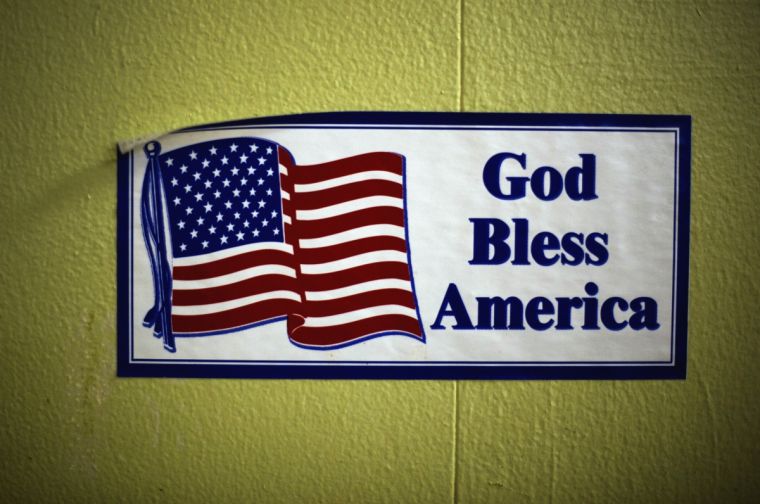Would Jesus Burn The Stars And Stripes?

Trashing a precious national symbol: it seems unthinkable that Jesus would do such a thing, doesn't it?
To imagine Christ, say, burning the Stars and Stripes of the USA, or the Union Jack of the UK – it's impossible, isn't it?
And yet... When we read Mark 11, as we continue our journey through this Gospel, we find Jesus doing something that is not so far removed in its day from the equivalent of setting fire to a national flag today.
What happens is something that has perplexed many people. Indeed, at first sight, it appears to be an act of wholly capricious anger on Jesus' part. For he approaches a fig tree, discovers no fruit on it, and then says: "May no-one ever eat fruit from you again." Mark carefully notes: "And his disciples heard it" – as if to say, look, I realise what I am telling you sounds incredible, but, yes, this really did happen.
Sure enough, the next day, as they travel the same route again, Peter spots "the fig tree withered away to its roots" and points it out to everyone. But why would Jesus do this? Cursing a fig tree and making it wither seem petty, vindictive things to do. Atheist philosopher Bertrand Russell took a particularly dim view of the whole incident.
Yet had he taken a moment to investigate the background and context he might have understood. The background is that, as numerous commentators point out, the fig tree was a national emblem for God's people. There are Old Testament references to this in, for example, Hosea 9:10 and Nahum 3:12.
And the context is that the cursing of the fig tree is set alongside Jesus' actions in the Jerusalem temple, where he over-turns the tables of the money-changers and the seats of those selling doves, and denounces it for being a "den of robbers" – rather than "a house of prayer for all nations".
So the cursing of the fig tree is a "dramatic acted parable of judgment" as former Bishop Tom Wright puts it. God in Christ had come looking for spiritual fruit among his chosen people, and found plenty of outward religious activity (like the leaves on the fig tree) – but no actual, real fruit.
Many countries today have a national tree. For England, Wales and the USA it is an Oak; for Canada a Maple; for Scotland a Pine – and so on. Thus we might imagine one possible equivalent today of Jesus and the fig tree would him be cursing one of those trees, entering a leading place of Christian worship in that nation and pronouncing it spiritually barren. Put in those terms, it's not so far from the symbolism of flag-burning is it?
What, for example, would Jesus make of Washington National Cathedral, which has explicitly adopted the label "a house of prayer for all people" directly from his words in this passage? What would he make of Westminster Abbey in London? What, indeed, would he make of your own church? Are these places, which carry the name of Christ, producing what Jesus would recognise as genuine spiritual fruit? For all I know they may well be – praise God! Or is all their busy religious-based activity simply a load of showy, leafy decoration?
Matthew Henry writes: "The fruit of fig trees may justly be expected from those who have the leaves. Christ looks for the power of religion from those who make profession of it."
And of course all this doesn't just relate to nations and churches, it applies to us as individuals. So, if Jesus came to our house, would he find spiritual fruit in our lives? Or would he instead find us, especially at this time of year, preoccupied with materialism instead?
Indeed, to update what Jesus did with the fig tree in a way that might startle us now as much as his act in Jerusalem shocked those around him then: if Jesus came to our house, would he end up cursing our Christmas Tree?
David Baker is a former daily newspaper journalist now working as an Anglican minister in Sussex, England. The Rough Guide to Discipleship is a fortnightly series.











